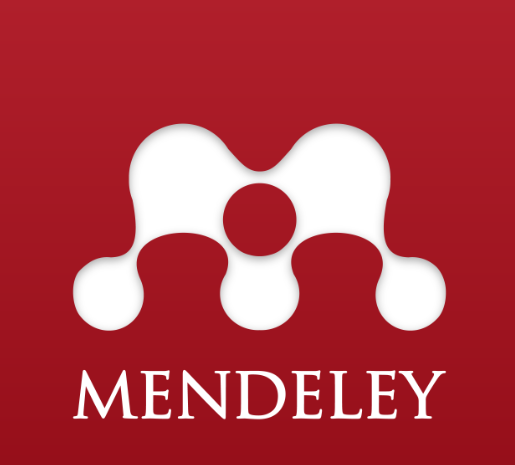Analysis Determinant of Optimization Assets With Asset Control Intervening Variabels (Case Study at The Bogor Agricultural Technology Research and Development Center
DOI:
https://doi.org/10.22219/mb.v11i2.19733Keywords:
Asset Optimize , Assest control , Kolmogrov-smirnov, MulticollinearityAbstract
This study aims to determine how much influence the use and security of assets have on asset optimization through asset control intervening variables, this is motivated by the implementation of asset administration, management and control. The research method used is the Kolmogorof-Smirnov one sample data normality test, collinearity test, multicollinearity test, and table f analysis test, as well as analysis test using intervening variables or path analysis. Based on the results of the calculations on the data normality test, it can be concluded that the data is normally distributed, the research variables are perfectly correlated, the variable does not occur multicollinearity, the f table test can explain all independent variables, can explain the dependent variable of each variable, the variable has a direct influence through intervening variable on asset optimization. The object of research is to immediately carry out administration, management and control based on the applicable money laws and regulations and complete a complete and detailed list of assets per each asset and can also carry out control by taking inventory, asset control card and complete a list of assets in each room, prequires commitment from the leadership in the work unit in order to administer assets to improve asset optimization and training, workshops, seminars and courses are needed for asset officers at the Center for the Study and Development of Agricultural Technology
Downloads
References
Aronggear, CJ (2015). Effect of Asset Management on Optimization of Fixed Assets (Land and Buildings) Study in the Regency of Pengunungan Bintang).
Hamdi, H. (2016). Determination of the Status of the Use of State Property in the Context of Optimizing State Revenue. FIAT JUSTISIA:Journal of Legal Studies, 9(4), 500–533. https://doi.org/10.25041/fiatjustisia.v9no4.734
Cashmere. (2013). Financial Statement Analysis. PT Raja Grafindo Persada.
McKellar J, KO (2016). Managing Government Property assets International Experiences. The Urban Institute.
Mulyadi. (2013). Accounting System (Print 4). Salemba Four.
Munawir, S. (2014). Financial Statement Analysis. Liberty.
Niliani, D. (2019). Implementation of Asset Management, Asset Management Human Resources, and Government Internal Control Systems and Their Influence on the Quality of Financial Reporting. Tirtayasa Journal of Accounting Research, 4(2), 102–113. https://doi.org/10.48181/jratirtayasa.v4i2.5650
Government Regulation Number 27 of 2014 concerning Management of State/Regional Property, (2014).
Government of the Republic of Indonesia, Law of the Republic of Indonesia Number 1 of 2004 concerning the State Treasury (2004).
Pinatik, S., Ilat, V., & Kolinug, M. (2015). Analysis of Fixed Asset Management at the Tomohon City Regional Financial and Asset Management Revenue Service. Journal of Research in Economics, Management, Business and Accounting, 3(1), 818–830. https://doi.org/10.35794/emba.v3i1.7556
Pratama, MR, & Pangayow, B. (2016). The Effect of Asset Management on Optimizing Regional Asset Management (Study on the Jayapura City Government). Journal of Regional Accounting and Finance, 2(2), 1–12.
Rachmawati, R. (2018). Optimizing the Use of Information Technology in the Administration of Regional Assets/Properties. ASSET Journal (Research Accounting), 10(2), 189–198. https://doi.org/10.17509/jaset.v10i2.15159
Rosmalinda. (2018). Analysis of State Property Administration at the Sabang State Prosecutor's Office. Scientific Journal of Management of Muhammadiyah Aceh, 8(1), 34–48.
Rudianto. (2009). Introduction of accounting. Erlangga Publisher.
Saragih, R. (2018). Effectiveness of State Property Administration Policy at Medan Agricultural Extension College. Journal of Public Administration : Public Administration Journal, 7(1), 77. https://doi.org/10.31289/jap.v7i1.1266
Sarangarajan, V. (2013). Asset Management Efficient Of Selected Cement Companies In Tamil Nadu. 6502(1978), 1–8.
Sarlimi, R., & Rahayu, F. (2019). The Effect of Regional Property Management on Regional Asset Security of the South Sulawesi Provincial Government. CELEBS Equilibrium Journal, 1, 18–25.
Simamora, R., & Halim, A. (2012). Factors Affecting Asset Management After Regional Expansion and Its Influence on the Quality of Government Financial Reports in Kab. South Tapanuli. Journal of Economics and Business, 10(1), 47–61. http://journal.unikal.ac.id/index.php/economy/article/view/338
Siregar. (2004). Asset Management. Satyatama Graha Tiara.
Sugiama, AG (2013). Bandung Tourism Asset Management. Guardaya Intimarta.
Sugiyono. (2014). Business Research Methods. Bandung: CV. Alpha Beta
Sutrisno. (2005). Financial Management (Theory, Concepts and Applications. Econisia.
Law of the Republic of Indonesia Number 1 of 2004 concerning State Treasury, Law of the Republic of Indonesia Number 1 of 2004 concerning State Treasury 1 (2004).
Warren, SC (2008). Introduction of accounting. Salemba Four.
Winarni, E., & Sari, Y. (2020). Analysis of Optimization of Asset/Goods Management (State Owned Goods) at the Jambi Provincial Public Works Office. Scientific Journal of Batanghari University Jambi, 20(1), 147. https://doi.org/10.33087/jiubj.v20i1.860
Downloads
Published
Issue
Section
License
Copyright (c) 2021 Manajemen Bisnis

This work is licensed under a Creative Commons Attribution 4.0 International License.
Authors who publish with this journal agree to the following terms:
- Authors retain copyright and grant the journal right of first publication with the work simultaneously licensed under a Creative Commons Attribution-ShareAlike 4.0 International License that allows others to share the work with an acknowledgment of the work's authorship and initial publication in this journal.
- Authors are able to enter into separate, additional contractual arrangements for the non-exclusive distribution of the journal's published version of the work (e.g., post it to an institutional repository or publish it in a book), with an acknowledgment of its initial publication in this journal.
- Authors are permitted and encouraged to post their work online (e.g., in institutional repositories or on their website) prior to and during the submission process, as it can lead to productive exchanges, as well as earlier and greater citation of published work (See The Effect of Open Access).

This work is licensed under a Creative Commons Attribution-ShareAlike 4.0 International License.




71.png)





